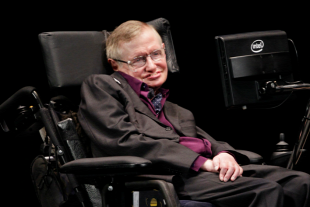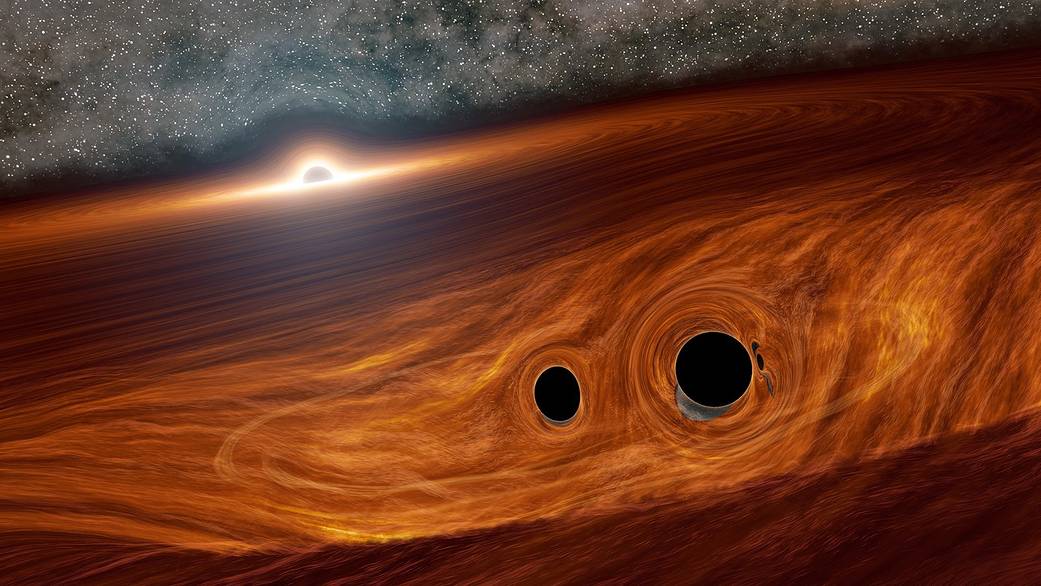On November 26, 2021, the US space agency, NASA, said that for the first time, signs of two black holes merging had been detected. This phenomenon includes a terrible gravitational interaction, in addition to the intense “ripple” of space-time, that is, the generation of strong gravitational waves, can create real vacuum bubbles that cause a cosmic vacuum catastrophe. Sean Carroll of the California Institute of Technology believes that if a true vacuum bubble appears in our cosmic environment, its consequences will be unpredictable, and in the blink of an eye the 14 billion-year-old universe in which we live will disappear.
The merger of black holes with the highest mass could cause a cosmic catastrophe
According to a recent NASA announcement, on May 21, 2019, two gravitational wave detectors, LIGO (National Science Foundation’s Laser Gravitational Wave Observatory) and VIRGO (European Virgo), captured gravitational waves that, by their nature, were two lions. Holes. May have arisen during fusion.

The event, which was precisely identified and cataloged as GW190521g, allowed astrophysicists at the Zwicky Transit Facility (ZTF) at Palomar Observatory near the California Institute of Technology near San Diego to examine the gravitational wave emission region, searching for identified light signals. This is the first time that the effect of light has been detected when black holes melt together.

The most special thing in the universe, black holes that can be considered a “degeneration” of matter, are named after the fact that these gravitational traps capture light and are therefore invisible.
Obviously, this also applies to black holes orbiting each other,
Therefore, a voluntary question arises about the source of the light effect from merging black holes. According to astrophysicists, the unusual energy associated with the phenomenon begins to radiate matter near the event horizon and emit light.

This, in turn, can already be detected visually. For the first time, the GW190521g event was able to observe gravitational waves and light effects from colliding black holes. On the other hand, if very large masses of black holes fuse together, some theories say that much worse, even catastrophic cosmic consequences are expected.
It is only superficially stable that the universe could theoretically collapse at any time
The Higgs boson, discovered in June 2012, whose existence was predicted by British Nobel Prize-winning physicist Peter Higgs based on a standard model of particle physics, is responsible for the mass of other particles. The Higgs boson stabilizes the universe.

If this mass-giving particle becomes much lighter, the universe will quickly collapse and the universe, which originated 14 billion years ago due to the Big Bang, will disappear in the blink of an eye. This is because the “fabric” of space-time is in an uncertain state of stability – what theoretical physicists call a pseudo-vacuum – which could theoretically collapse at any time, engulfing us as well. Says Sean Carroll, theoretical physicist at Caltech.

The key to the stability of the vacuum is the Higgs boson and its associated field, which permeates the entirety of spacetime and gives the mass of the elementary particles. When physicists at the Large Hadron Collider (LHC) in Geneva finally came across the “divine particle” after a long search, the mass of the Higgs boson was determined to be somewhere between 125 and 127 gigaelectronvolts. There is a significant difference between his theory and the measured values, as they were measured, that is, the true value is approximately 122 times smaller than the theoretical value of the invariance according to quantum space theory.

Simply put, the measurements still show a very high energy density in a vacuum. (In everyday perception, vacuum means empty space, but in reality vacuum also has energy, and in Einstein’s world there is no absolute absolute vacuum.) Steady state can be maintained for a very long time, but not at all without the risk of collapse.
Human civilization will disappear without even knowing what happened to it
If the vacuum were to change the energy density at any time and under the influence of anything, that is, the disintegration of the vacuum would occur, then the change would spread like a bubble in the universe, completely changing the universe. The so-called false vacuum exists only at the local minimum energy and is therefore not considered stable, unlike the true vacuum that exists and is stable at the global minimum.

A study published in 2015 showed that
The rate of steric decay may increase significantly near black holes.
Developing this idea, Rostislav Konoplich et al.

The intersecting surfaces between the bubbles can become infinitely dense and create tiny black holes that evaporate as Hawking radiation is emitted before it takes about 10 milliseconds before the larger black holes collide and devour the vacuum bubbles in their path. black holes.

What is Hawking radiation?
Hawking radiation is black-body radiation that has been predicted but not yet confirmed by experiment or observation and occurs near the event horizon of black holes due to the phenomenon of quantum mechanics. The radiation is named after Stephen Hawking, the English theoretical physicist who raised the theoretical possibility of this phenomenon in a 1974 study. Hawking radiation reduces the energy and mass of a black hole, a phenomenon called black hole evaporation.
(The theory can easily be tested by looking for Hawking radiation emitted before black holes merge.) The merger of supermassive black holes could thus create true vacuum bubbles, with all their potential consequences. According to some theorists, the transition from the false vacuum state that characterizes the universe to the true stable vacuum state can have disastrous and devastating effects. These consequences can range from the complete destruction of fundamental interactions, elementary particles and the structures that build them, to “micro” changes, the last being the survival of some cosmic structures.

A model in 2005 by Max Tegmark, a theoretical physicist at the Massachusetts Institute of Technology (MIT) and Nick Bostrom, a professor at Oxford University,
What will happen to the earth and to human civilization?
To move to a lower energy vacuum state. The two scientists came to the conclusion that if this happened (for example, as a result of the merging of a pair of black holes with a relatively close maximum mass), then all information about the event would reach us only at the moment of destruction.
Sources used:
NASA Editor: Yvette Smith, Black Hole Collider May Have Exploded Light, November 26, 2021
Philip Borda; Gregory, Ruth; Moss, Ian J. (2015) “Vacuum stability in black holes.” Journal of High Energy Physics
Chitishvili, Mary; Gogbrashvili, Merab; Konoblish, Rostislav; Sakharov, Alexander S.; (2021-11-17) Higgs-induced triple luminescence in binary black hole mergers,
Anil Ananthaswamy, the Higgs boson makes the universe stable – only. Coincidence? New world, October 26, 2016






